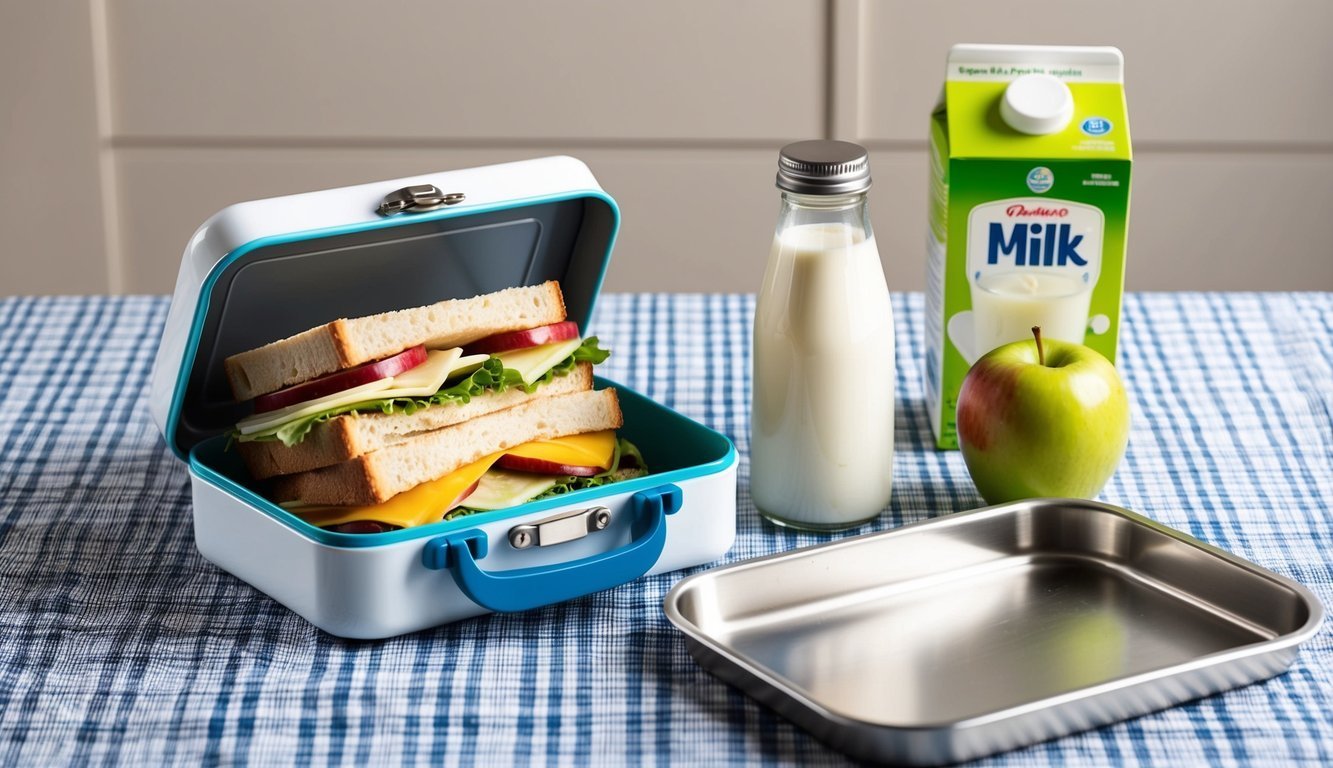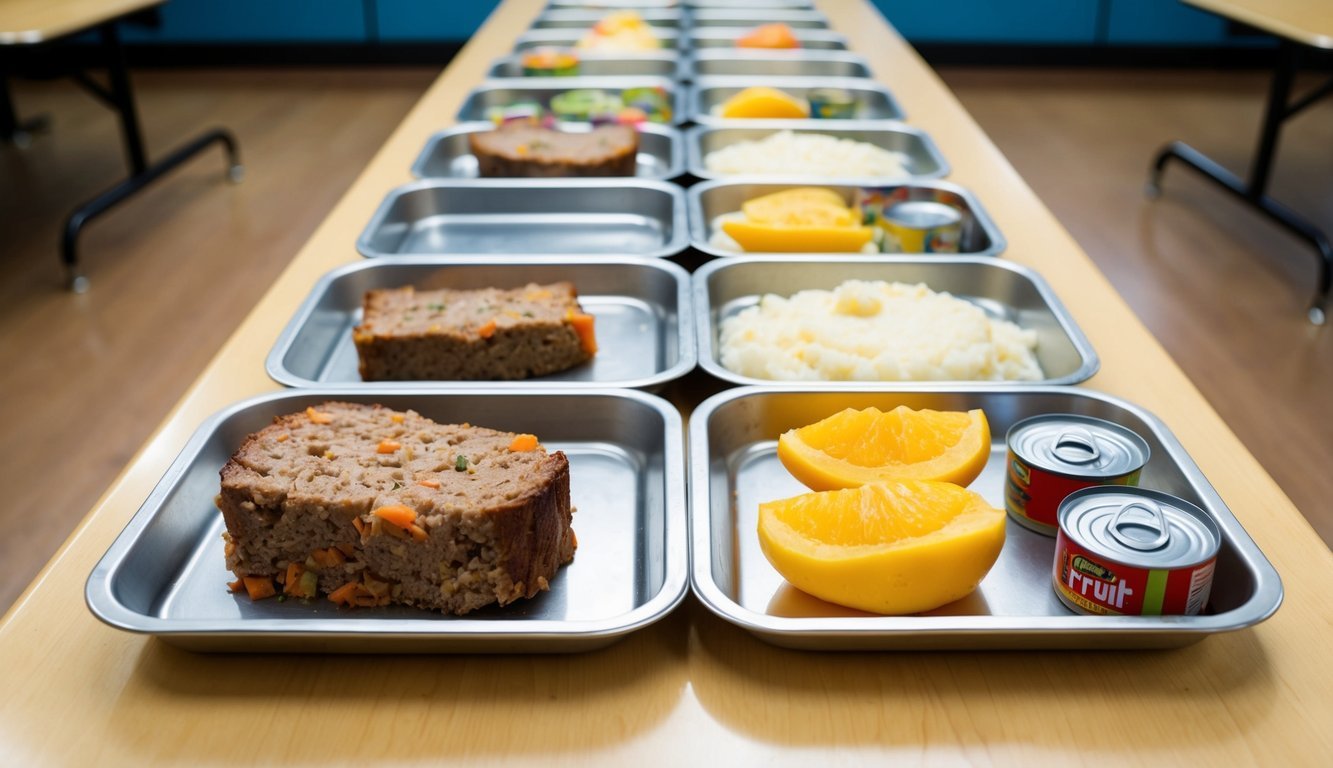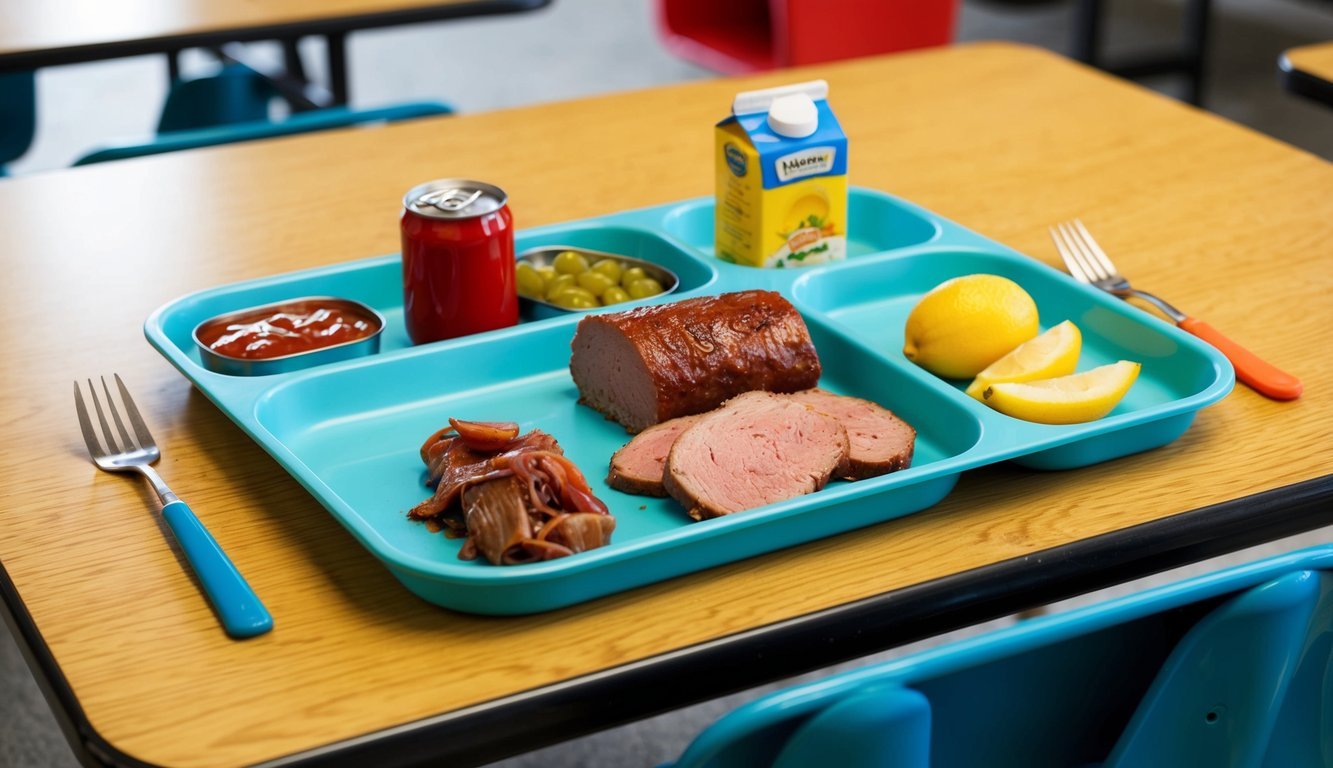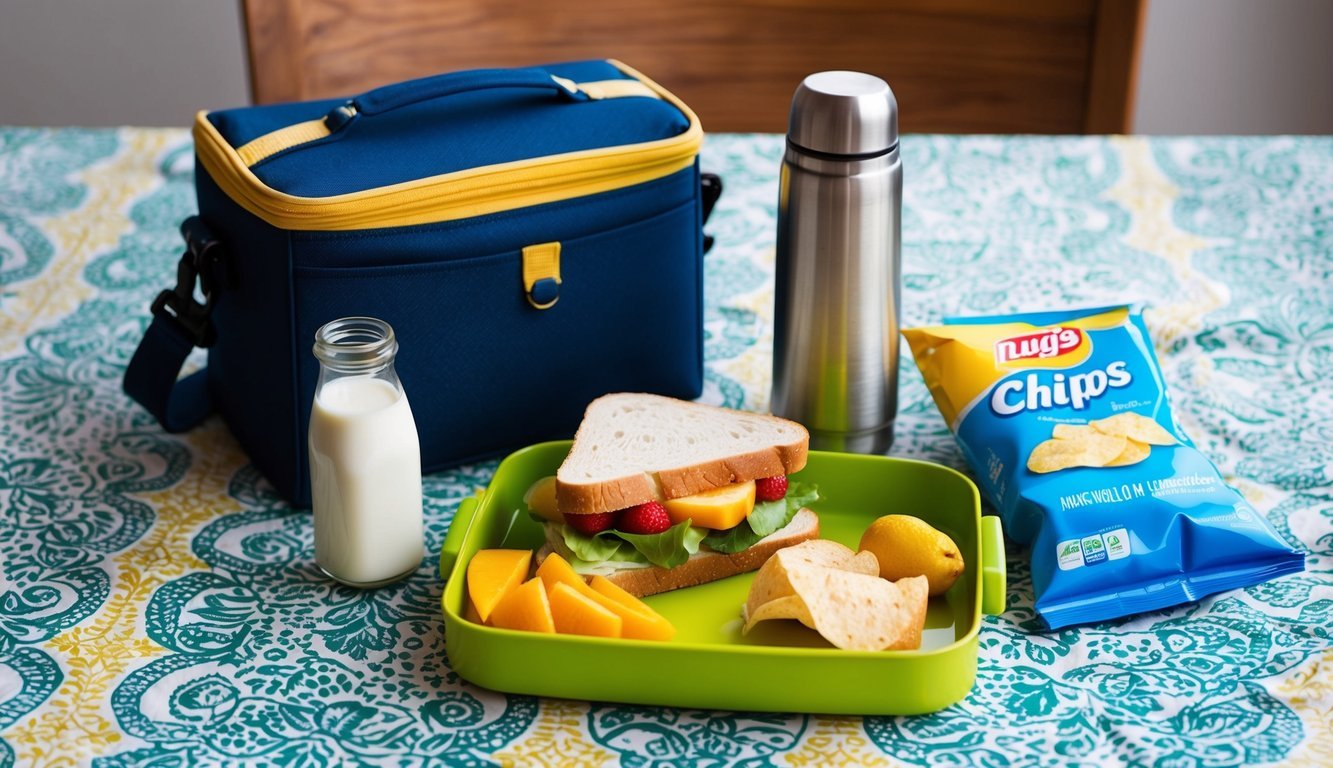PsychNewsDaily Publishers
100 Summit Drive
Burlington, MA, 01803
Telephone: (320) 349-2484
PsychNewsDaily Publishers
100 Summit Drive
Burlington, MA, 01803
Telephone: (320) 349-2484
School lunches in the 1970s featured nostalgic dishes like rectangular pizza, Sloppy Joes, and peanut butter sheet cake, reflecting cultural trends and creating lasting memories for students.

School lunches in the 1970s hold a special place in many people’s hearts. The meals served during that time often reflected the culture and trends of the era, making them memorable for those who experienced them. From meatloaf to rectangular pizza, these lunches were a unique part of growing up that many still remember fondly.
As children sat together in bustling cafeterias, they enjoyed a variety of dishes that shaped their lunchtime experiences. Those meals not only filled their stomachs but also created lasting memories and friendships. The nostalgia surrounding 1970s school lunches continues to spark conversations and smiles among those who shared those moments.

Many people fondly remember rectangular school pizza from their childhood. This pizza was often served in schools during the 1970s. It had a unique shape that made it easy to stack and share.
The classic version featured a crispy crust topped with cheese and, sometimes, pepperoni. Some dishes were made with whole grain crust, making them a little healthier. Kids looked forward to pizza day each week, and some schools even had pizza every day.
School pizza sparked nostalgia for many, with discussions popping up on social media about those tasty lunches. It was not just a meal but a shared experience among students. The rectangular shape added to its charm and made it a true school lunch staple.
People still recall the flavor and how it was a part of their day. School pizza created memories that many cherish even today.

Many people remember Sloppy Joes as a school lunch favorite. This dish is made with seasoned ground beef and served in a soft bun. It was a messy but tasty option for kids.
On the side, French fries were often included. They were crispy and golden, making the meal even better. Students loved dipping fries in ketchup or enjoying them plain.
Lunchboxes sometimes had a mix of these items. Kids would trade different foods, hoping to get extra fries or a Sloppy Joe. This combination was a staple in many school cafeterias during the 70s.
These meals brought comfort and joy. Even years later, the taste of Sloppy Joes and French fries brings back memories of carefree school days. Friends gathered around the lunch table, sharing stories and laughter.

Peanut Butter Sheet Cake was a favorite in many school cafeterias during the 70s. This cake is simple yet delicious, made with basic ingredients like flour, sugar, and, of course, peanut butter.
Baking it in a large sheet pan made it easy to serve to many students. The cake had a soft texture and a rich peanut butter flavor that kids loved.
Often, a sweet icing was added on top to make it even more inviting. This dessert brought back memories of lunch trays filled with warm, comforting treats.
For many, Peanut Butter Sheet Cake was the highlight of school lunches, reminding them of carefree days spent with friends. It’s a nostalgic treat that continues to be cherished today.

In the 1970s, schools used ditto paper to print lunch menus. This special paper created a distinct smell that many people remember fondly. The menus were often colorful and featured fun designs.
Students could see what was on the menu for the week. The lunches included items like pizza, meatloaf, and mystery meat sandwiches. Most kids had to choose milk with their lunch too.
Sharing these menus with friends was part of lunchtime excitement. It was common to discuss the day’s options while waiting in line. Many still recall the happy feelings tied to those simple menus.
Looking back, ditto paper menus bring back memories of school days. They remind many of the atmosphere in the cafeteria, filled with laughter and the smell of food.

Mystery meat was a common feature of school lunches in the 1970s. Students often looked at their plates with curiosity and a bit of fear. They would wonder what type of meat was served that day.
This food was usually a mix of various meats, sometimes unidentifiable. It could be meatloaf, chicken a la king, or something else entirely. Some kids found it tasty, while others were not so sure.
Mystery meat sandwiches became a staple for many students. They might have been piled high on bread with some sauce or gravy. It was filling, which made it popular, even if the origin was a mystery.
Many kids have fond memories of those lunchroom days. Despite the uncertainty about the meat, it created a sense of nostalgia. The quirky food still brings smiles and laughter when reminiscing about school lunches.

Macaroni and cheese was a classic school lunch in the 70s. Many students remember it as a warm and cheesy treat. It often featured elbow macaroni mixed with a creamy cheese sauce.
School cafeterias served a simple version that made kids smile. The sauce was usually made with American cheese, milk, and a bit of butter. Seasonings like mustard and pepper added extra flavor.
This dish brought back memories of lunchtime chatter and laughter. Many families have their own special recipes. Some even handed down from parents who enjoyed the same dish in their school days.
The comforting taste of macaroni and cheese made it a favorite. When students saw it on the lunch menu, they knew they were in for a treat. It was more than just food; it was a piece of joy from their childhood.

School lunch programs in the United States have changed significantly from their early beginnings. The 1970s brought new federal initiatives and guidelines that aimed to improve the quality and nutrition of meals provided to students. This section looks at the important developments during this period.
In the 1970s, the National School Lunch Program (NSLP) expanded due to increased awareness of children’s nutrition needs. The federal government focused on providing nutritious meals, especially for low-income families.
Key initiatives included:
These efforts aimed to ensure that all students received healthy meals during school.
Nutritional guidelines in the 1970s emphasized balanced meals for students. Schools began to follow the guidelines set by the USDA, which aimed to provide a variety of food groups.
Main aspects of the guidelines included:
These changes aimed to promote better eating habits among students, which was important for their health and learning.

School lunches in the 1970s reflected the broader culinary and cultural trends of the time. These meals were shaped by popular foods, the rise of fast food, and influences from television and media, impacting what kids were served and how they perceived their meals.
In the 1970s, many school lunches featured dishes that mirrored national food trends. The backlash against traditional cooking meant schools often turned to easier options. Processed foods became common, with items like frozen pizza and mystery meat being staples.
Many students experienced new flavors as cultural diversity began to rise. Mexican and Italian foods entered the lunchroom menu, often served in simplified forms. Taco day was a favorite, showcasing tacos or simple burritos, reflecting growing popularity.
In addition, schools shifted from animal fats to pressed seed oils. This change led to a notable shift in taste and texture, with many meals tasting more bland or greasy.
Television significantly influenced school lunches in the 1970s. Popular shows featured characters eating recognizable meals. This exposure shaped children’s expectations of food, creating a desire for more exciting options.
Fast food chains gained popularity, pushing many schools to incorporate similar foods into their menus. Kids wanted burgers and fries, similar to what they saw on TV. Popular slogans from fast food commercials also influenced lunch choices, leading to the introduction of items like mass-produced hamburgers in some schools.
Media also showcased new recipes and lunch ideas, prompting schools to modernize meals. Cookbooks and television shows encouraged schools to experiment, leading to a variety of creative approaches to lunch across the nation.

Lunchrooms in the 1970s were lively places filled with unique experiences. Students not only gathered to eat but also to socialize and enjoy the atmosphere created by the school’s decor and the daily routine.
During lunchtime, the cafeteria buzzed with chatter as students came together. Friend groups often formed around tables, sharing laughter and stories. Some kids looked forward to specific days, like pizza day, where rectangular slices were traded and shared.
Tables were the centers of friendship, rivalry, and even a bit of drama. Groups could be very social, with playful banter and exchanges of food. Meanwhile, some students preferred keeping their heads down, quietly enjoying their meals.
The social scene was influenced by the food served, including unique items like beef macaroni and fish sticks. Students would eagerly discuss their preferences and dislikes, often leading to debates over the best lunch menu item.
The cafeteria’s decor contributed significantly to the lunchroom experience. Brightly colored trays and plastic cutlery made the meal feel special. Walls often sported murals or posters designed to create an inviting environment.
The smells of various meals filled the air, from the tang of tomato sauce on pizza to the sweet scent of fruit cups. The atmosphere was lively, with the clatter of trays and friendly shouts echoing throughout.
Students could feel a sense of excitement while waiting in line. Cafeteria workers greeted them with warm smiles. This mix of food, sounds, and lively interactions made the lunchroom a memorable part of their school day.

This section answers common questions about school lunches from the 1970s. It covers menus, costs, changes over time, and memorable items.
School lunch menus in the 1970s often included dishes like rectangular pizza, sloppy joes with French fries, and fish sticks. Students might also enjoy peanut butter sheet cake for dessert. Meals were designed to be hearty and filling, often served with sides like rolls or mashed potatoes.
In the 1980s, school lunches saw more focus on nutrition. Many schools reduced the amount of fried foods and included more fresh vegetables.
The average cost of a school lunch in the 1970s was around 50 cents. Some schools offered lunch for even less, making it affordable for many families. This cost often varied based on location and school policies.
Since the 1970s and 1980s, school lunches have changed significantly. New guidelines focus on nutrition, reducing sugar and fat. Schools now aim to provide more balanced meals with whole grains and fresh produce.
Yes, during the 1970s and 1980s, several policies were introduced to improve school meals. Reports raised concerns about nutritional quality, leading to changes in food guidelines. These policies aimed to ensure that meals met specific health standards.
In the 1970s, students found mystery meat days memorable. These days sparked curiosity among students. Ditto paper menus displayed the week’s lunches, often creating nostalgia. Peanut butter sheet cake was a beloved dessert that many still remember fondly.